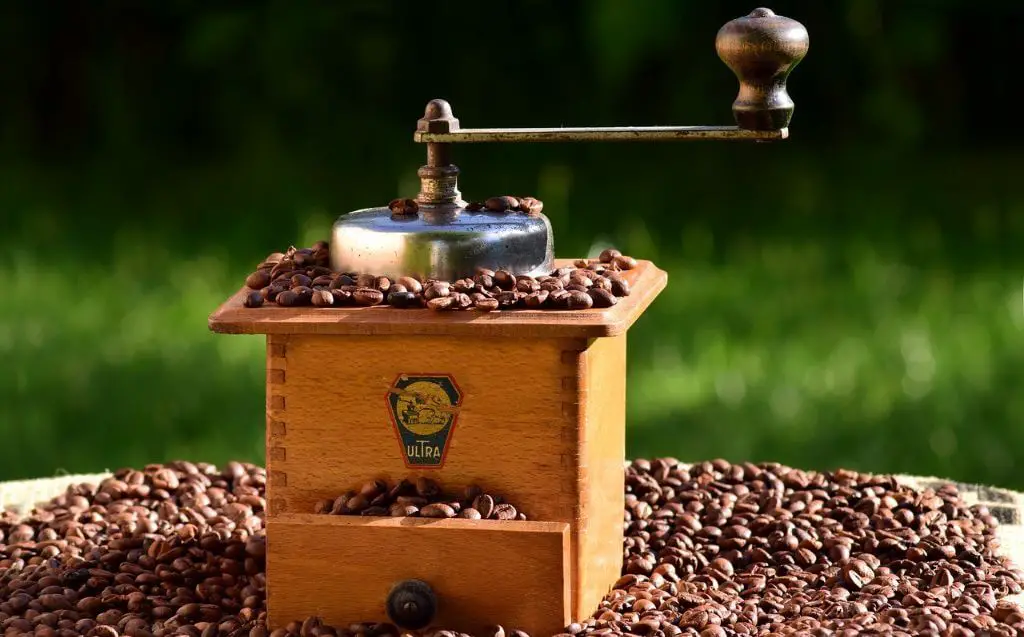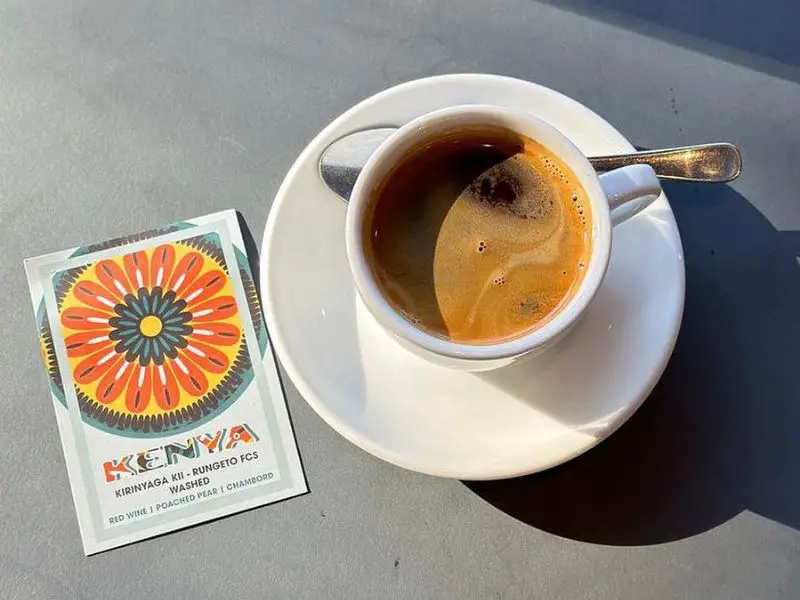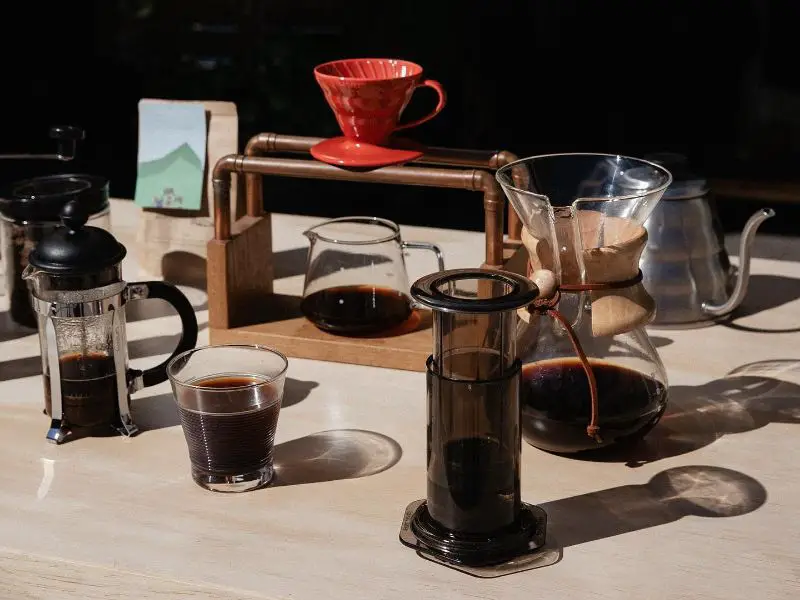Becoming a French press coffee aficionado is more than just a caffeine fix – it’s an art form. And at the heart of this craft lies the enigma of steeping time. It’s the secret sauce that transforms ordinary coffee into an extraordinary brew, brimming with flavor and aroma.
Join us on this journey as we decode the mysteries of steeping time, unveiling why it’s pivotal and how to wield it like a coffee connoisseur for a truly exceptional cup.
Why Steeping Time Is Crucial in Coffee Brewing?
Steeping time is the period during which your coffee grounds and water mingle in your French press, creating a brew that’s bursting with flavor and aroma. It’s crucial because it directly affects two fundamental aspects of your coffee: flavor and strength.
Impact on Flavor
The length of steeping time has a profound impact on the flavor profile of your coffee. During this process, the water extracts various compounds from the coffee grounds, including acids, sugars, and oils. These compounds contribute to the taste and aroma of your brew.
- Short Steeping Time: A shorter steeping time, typically around 3-4 minutes, results in a milder and brighter flavor profile. The coffee may have a slight acidity and a lighter body, making it ideal for those who prefer a more delicate cup.
- Medium Steeping Time: Steeping for 4-6 minutes strikes a balance, extracting a range of flavors and aromas. You can expect a well-rounded cup with moderate acidity and body, suitable for most coffee enthusiasts.
- Extended Steeping Time: If you prefer a bolder, more robust coffee, a longer steeping time of 6-8 minutes or more is the way to go. This extra time extracts deeper and richer flavors, along with a fuller body. However, be cautious not to overdo it, as excessive steeping can lead to bitterness.
Impact on Strength
Steeping time also influences the strength or concentration of your coffee. This is closely related to the coffee-to-water ratio. The longer the steeping time, the more soluble compounds are extracted, resulting in a stronger brew.
- Short Steeping Time: A shorter steep typically yields a milder and less concentrated coffee. It’s perfect for those who enjoy a lighter cup with a balanced strength.
- Medium Steeping Time: This range offers a medium-strength coffee that’s versatile and suits a wide range of preferences. It strikes a harmonious balance between flavor and strength.
- Extended Steeping Time: If you’re seeking a bold and robust coffee experience, longer steeping times will produce a stronger cup. However, be mindful of the fine line between strong and overpowering.
To put it briefly, the crucial role of steeping time in coffee brewing cannot be overstated. It’s the gateway to unlocking the myriad flavors and strengths that coffee beans have to offer. Adjusting your steeping time allows you to fine-tune your brew to match your personal preferences, ensuring each cup is a delightful experience tailored just for you.
Factors Affecting Steeping Time
Temperature of Water
The Hotter, the Better? Not Exactly.
The temperature of the water you use plays a pivotal role in determining the ideal steeping time. Generally, water should be hot, but not boiling. The optimal temperature falls between 195°F to 205°F (90°C to 96°C).
If your water is too hot, it can over-extract the coffee, resulting in bitterness. Conversely, water that’s too cool may under-extract, leading to a weak and uninspiring brew.
Coffee Grind Size
The Grind Matters
The grind size of your coffee beans is another crucial factor. It directly affects how quickly water can penetrate the coffee grounds during the steeping process.
- Coarse Grind – If your coffee grounds are coarse, it will take longer for water to extract the flavors. A coarse grind typically requires a longer steeping time, usually around 4-5 minutes.
- Medium Grind – A medium grind strikes a balance, allowing for a moderate extraction rate. Steeping time for medium grind coffee often ranges from 3-4 minutes.
- Fine Grind – With a fine grind, water penetrates the grounds quickly, meaning a shorter steeping time is required, typically around 2-3 minutes.

Coffee-to-Water Ratio
Getting the Ratio Right
The coffee-to-water ratio in your French press matters not only for taste but also for steeping time. A standard ratio is 1:15, which means 1 gram of coffee for every 15 grams of water. Adjusting this ratio can influence how long your coffee should steep.
- Stronger Coffee – If you prefer a bolder and stronger brew, use a higher coffee-to-water ratio. A ratio of 1:12 or 1:13 will lead to a shorter steeping time of around 3-4 minutes.
- Milder Coffee – For a milder flavor, use a lower ratio, like 1:16 or 1:17. This will result in a longer steeping time, typically around 4-5 minutes.
Roast Level of Coffee Beans
Light, Medium, or Dark Roast?
The roast level of your coffee beans also influences steeping time. Different roast levels release flavors at varying rates during the brewing process.
- Light Roast – Lightly roasted beans tend to retain more moisture and are denser. Consequently, they may require a slightly longer steeping time to fully develop their flavors, typically around 3-4 minutes.
- Medium Roast – Medium roasts are the most versatile and can work well with a range of steeping times, typically between 3-4 minutes.
- Dark Roast – Dark roasts are less dense due to the extended roasting process. They often have a more pronounced flavor, so a shorter steeping time of around 2-3 minutes is usually sufficient.
Understanding these factors and how they interact will help you fine-tune your French press brewing process and create the perfect cup of coffee tailored to your taste preferences.
How long do you steep coffee in a French press? General guidelines
When it comes to steeping time in a French press, there’s a sweet spot you want to hit for that perfect cup of coffee. While there’s no one-size-fits-all answer, there are some general guidelines that can steer you in the right direction.
For most coffee enthusiasts, a steeping time of about 4 to 5 minutes is considered the gold standard. This duration allows the coffee grounds to fully infuse the water, extracting the flavors without overdoing it. However, this can vary depending on factors like grind size, water temperature, and personal preference.
If you enjoy a milder cup, you might opt for a shorter steeping time of around 3 minutes. On the other hand, if you like your coffee strong and robust, extending the steeping time to 6 minutes or slightly longer could be your go-to.
But remember, these are just starting points. The best way to determine your ideal steeping time is through a bit of trial and error. Start with the 4 to 5-minute range and then adjust based on your taste preferences.
How to Use a French Press for Coffee Brewing? Step-by-Step
Let’s break down the process step by step to ensure your coffee comes out just the way you like it.
Step 1: Gather Your Tools
Before diving into the brewing process, make sure you have everything you need:
- French press
- Fresh coffee beans (whole or coarsely ground)
- Boiling water
- Timer
- Stirring utensil
- Coffee mug
Step 2: Measure Your Coffee
The ideal coffee-to-water ratio is about 1:15, but you can adjust this based on your taste preferences. Start by measuring your coffee grounds. For instance, if you’re using 30 grams of coffee, you’ll need 450 milliliters of water.
Step 3: Boil the Water
Bring your water to a boil and let it cool for a minute or two. The water temperature should be around 200°F (93°C) for optimal extraction.
Step 4: Preheat the French Press
Preheat your French press by adding a small amount of hot water and swishing it around. This helps maintain a consistent brewing temperature.

Step 5: Add Coffee Grounds
Dump the coffee grounds into the preheated French press.
Step 6: Begin the Bloom
Start your timer and pour just enough hot water to saturate the coffee grounds evenly. This initial “bloom” allows the coffee to release gases, enhancing the flavor. Let it bloom for about 30 seconds.
Step 7: Pour the Remaining Water
After the bloom, pour the rest of the hot water evenly over the coffee grounds. Place the lid on the French press with the plunger pulled all the way up.
Step 8: Start the Timer
As soon as you finish pouring, start your timer. The steeping time is typically 3-4 minutes for a standard French press, but you can adjust it to your taste.
Step 9: Stir and Break the Crust
Around 30 seconds into the steeping process, give the coffee a gentle stir with your stirring utensil. This helps to break the crust that forms on the surface.
Step 10: Plunge Slowly
Once the timer hits your desired steeping time, slowly press down the plunger. Apply even pressure to avoid forcing the grounds through the mesh too quickly.
Step 11: Pour and Enjoy
Pour your freshly brewed coffee into your favorite mug. Don’t forget to savor the aroma as you pour, as it’s an integral part of the coffee experience.
Remember that the steeping time can be adjusted based on your taste preferences. If you like a stronger cup, you can let it steep a bit longer. The beauty of the French press is that it gives you control over every aspect of your coffee, including timing.

How to Adjust Steeping Time for Personal Taste?
How do you adjust the steeping time to match your personal taste? Here’s a breakdown of the steps to help you get it just right:
1. Start with the Basics
Before diving into customization, it’s crucial to understand the basics. A typical French press recipe suggests steeping your coffee for about 4 minutes. This is a great starting point for most coffee lovers.
2. Consider Your Coffee Grind Size
The grind size of your coffee beans plays a significant role in steeping time. If you’re using a coarser grind, you might need to steep a bit longer to extract the flavors fully. Conversely, with a finer grind, you may want to shorten the steeping time to prevent over-extraction.
3. Determine Your Coffee-to-Water Ratio
The coffee-to-water ratio is another factor that can impact steeping time. If you’re using a higher coffee-to-water ratio, a slightly longer steeping time might be necessary to ensure a strong brew. Conversely, if you prefer a milder cup, you can reduce the steeping time.
4. Consider Water Temperature
The temperature of the water you use for brewing also matters. Cooler water may require a longer steeping time, while hotter water can lead to faster extraction. Experiment with water temperature and steeping time to find the right balance.
5. Taste as You Go
The key to adjusting steeping time for personal taste is to taste as you go. Start with the recommended 4-minute steeping time, then taste your coffee. If it’s too strong or bitter, shorten the steeping time by 30 seconds and taste again. Keep adjusting in 30-second increments until you achieve your desired flavor profile.
6. Note Your Preferences
As you experiment with steeping times, keep a coffee journal. Note the steeping time that produced your favorite cup of coffee. This way, you can replicate it in the future without guesswork.
7. Don’t Be Afraid to Experiment
The beauty of French press brewing is that it allows for experimentation. Embrace it! Try different steeping times, grind sizes, and coffee-to-water ratios to discover what suits your palate best. Coffee brewing is an art, and your taste buds are the ultimate judges.
By following these steps and being open to experimentation, you’ll be well on your way to adjusting steeping time for a personalized coffee experience that perfectly suits your taste buds.
Common Mistakes to Avoid
Common Errors in Steeping Time
- Underestimating the Bloom: Not allowing the initial bloom to happen for at least 30 seconds can result in uneven extraction and a less flavorful brew. Always include this step.
- Over-Steeping: Leaving the coffee to steep for too long, well beyond 4 minutes, can lead to over-extraction and bitterness. Stick to the recommended steeping time.
- Neglecting Temperature: Using water that is too hot or too cold can affect the brewing process. Always aim for water around 200°F (93°C) to ensure proper extraction.
Tips to Avoid These Mistakes
- Use a Timer: To avoid over-steeping, use a timer from the moment you start pouring water over the coffee grounds. This ensures you don’t lose track of time.
- Invest in a Thermometer: To maintain the right water temperature, consider using a kitchen thermometer. This simple tool can make a significant difference in your brew’s quality.
- Experiment: Coffee is a matter of personal taste. Don’t be afraid to experiment with steeping times to find the one that suits your palate best.
Alternative Techniques
Other Coffee Brewing Methods
While the French press is a beloved classic, there are alternative methods for coffee brewing:
- Pour-Over: This method allows you to control the steeping time by adjusting your pouring speed. Generally, it takes about 2-3 minutes for a pour-over brew.
- Aeropress: Known for its speed, the Aeropress usually requires a shorter steeping time, around 1-2 minutes, depending on the recipe you follow.
- Drip Coffee Maker: Drip machines automatically control the steeping time, so you don’t need to worry about it. Just set it and forget it.
Varying Steeping Times with Other Methods
The steeping time can vary with alternative brewing methods:
- Espresso: Espresso shots are extremely quick, taking only about 25-30 seconds to brew.
- Cold Brew: Cold brew, on the other hand, requires a much longer steeping time of 12-24 hours due to its cold extraction process.
- Turkish Coffee: This method involves boiling the coffee grounds, so the steeping time is relatively short, usually around 2-3 minutes.
Each method offers a unique coffee experience, and finding the right one for you might involve experimenting with steeping times and techniques.
FAQs
Do you stir French press coffee during steeping?
Yes, it’s recommended to gently stir the coffee and water mixture after adding them together in the French press to ensure even saturation.
Do you stir French press coffee once it steeps?
It’s generally not necessary to stir the coffee once it has steeped. However, if you prefer, you can give it a gentle stir just before pressing the plunger.
Can you steep coffee too long in French press?
Yes, oversteeping can lead to a bitter and over-extracted brew. Finding the right steeping time is crucial for a balanced flavor.
A Recap
Finding the perfect steeping time for your French press is the key to unlocking a coffee experience like no other. With the right timing, you can savor every nuance of flavor and aroma in each cup.
So, whether you prefer a short and intense brew or a longer, mellower infusion, remember that the power to control your coffee’s destiny is in your hands. Experiment, taste, and enjoy the journey to your perfect French press brew.

